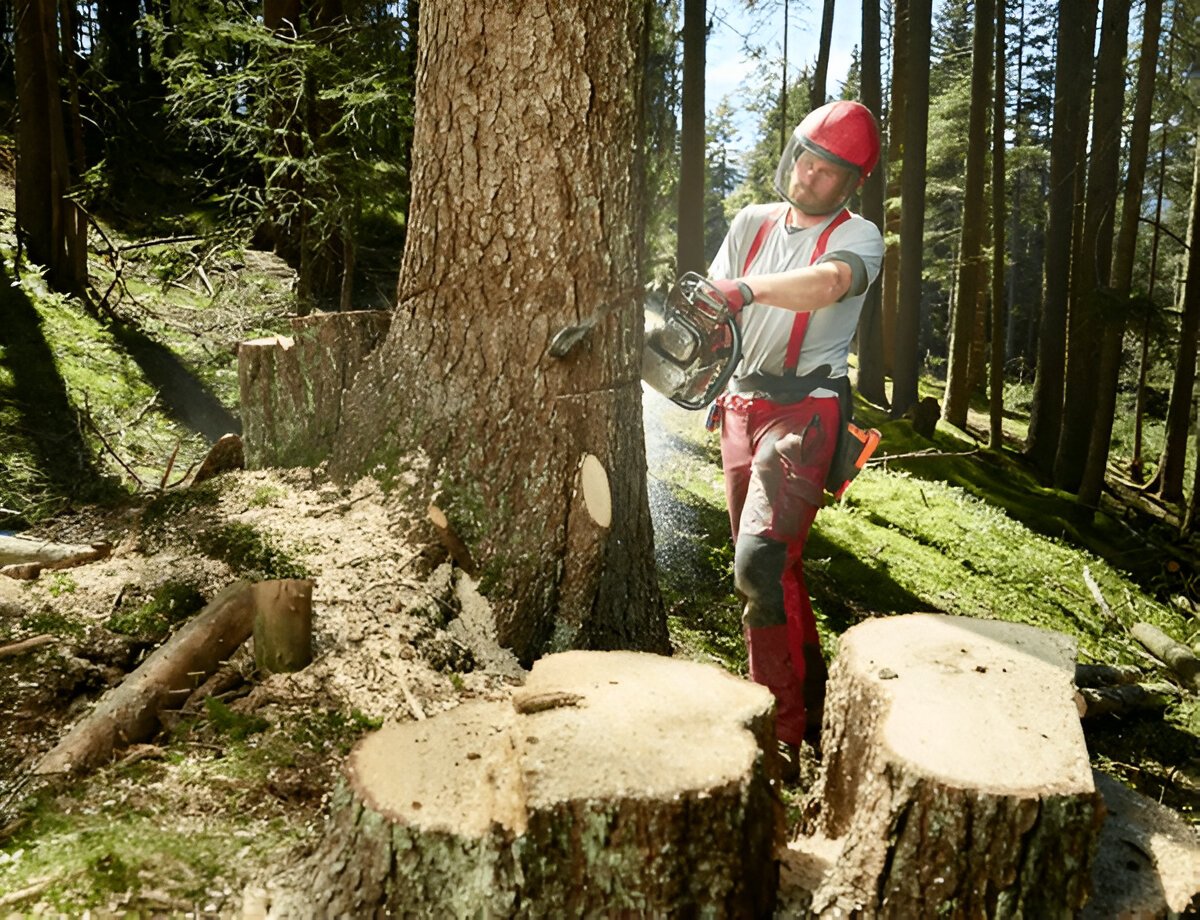What are power tools for tree removal They’re used to safely cut, trim, and remove trees of all sizes—whether you’re clearing storm damage, pruning limbs, or taking down a full tree. These tools speed up the process, reduce physical strain, and improve precision. From high-powered chainsaws to electric branch cutters, tree cutting tools are essential for both homeowners and professionals handling outdoor maintenance or large-scale removal work.
Whether you’re tackling weekend yard work or managing full-site land clearing, having the right tree cutter tools saves time and cuts down risk. Let’s break down the types of equipment available, when to use them, and which tools deliver the most value per task.
Tree Cutting Tools Names You Should Know
Here’s a breakdown of the most common and useful tree cutting tools names in the field. Some are powered, others manual—but each has a clear role.
1. Chainsaw
This is the workhorse of tree cutting tools. Available in gas, battery, or electric models, a chainsaw is the go-to for felling trees, cutting large branches, or turning logs into manageable pieces. For serious work, heavy-duty tree cutting equipment like a gas chainsaw with a 20″ bar gets the job done quickly.
2. Pole Saw
Ideal for reaching high branches without using a ladder, pole saws come in manual or powered versions. An electric saw for trees on an extendable pole is safer for elevated trimming and makes cuts cleaner and faster.
3. Electric Tree Branch Cutter
This tool bridges the gap between shears and saws. It’s ideal for mid-size limbs and useful when you need more power than hand tools but less bulk than a chainsaw.
4. Loppers and Manual Pruners
These are classic tree trimming tools. Bypass loppers are great for fresh green wood, while anvil loppers cut dead or hard wood. Though not powered, they’re still part of essential tree cutting hand tools.
5. Stump Grinder
Once the tree is removed, the base still needs handling. A stump grinder turns the remaining trunk into mulch and levels the surface, preventing future root growth.
6. Hedge Trimmer and Tree Trimmer Tools
While not made for large branches, these electric tools are perfect for shaping hedges or trimming small limbs. Tree trim tools in this category are lightweight and easy to control.

Matching Tree Cutter Tools to the Job
Every type of tree work calls for a different tool. Using the wrong one risks injury, poor results, or wasted effort. Here’s how to match the tool to the task:
Full Tree Removal
For cutting down an entire tree, a chainsaw—especially gas-powered—is the best choice. These tools provide enough torque and bar length to handle thick trunks with fewer passes. This is where commercial tree cutting equipment becomes vital.
Branch Trimming
Use a pole saw or electric tree branch cutter for high branches or limbs over fences and roofs. These tools keep your feet on the ground and your cuts controlled.
Canopy Shaping or Small Limb Removal
Tree trimmer tools like hedge shears, cordless clippers, or telescopic pruners are perfect for this. Look for ergonomic designs and extended reach if you’re working solo.
Stump Grinding
After felling, use a stump grinder. Larger properties or business lots often call for industrial models, part of standard professional tree trimming equipment setups.
Tree Cutting Hand Tools Still Matter
While power tools take the lead on speed and volume, tree cutting hand tools still serve important functions. Manual saws give more control in tight spots. Loppers and hand pruners are perfect for clearing small branches that aren’t worth firing up a motor for.
Hand tools also allow quieter, low-maintenance work. In situations where power tools can’t reach or are too heavy to maneuver safely, these simple cutters come in clutch.
Commercial Tree Cutting Equipment for Heavy Work
When clearing land or working on multiple trees per day, you need commercial tree cutting equipment built for output and safety. These tools are engineered for durability, power, and worker protection.
Common features include:
- High-displacement chainsaws with anti-vibration handles
- Telescopic pole saws with automatic oiling
- Self-propelled stump grinders with carbide teeth
- Power-assisted pruners and high-reach lifts
This category is used by arborists, landscaping crews, and construction teams. If you’re handling projects larger than the average backyard, this equipment is essential.

FAQ:
What tools are used to remove trees?
Tree removal tools range from chainsaws and pole saws to stump grinders and electric branch cutters. Professionals use a mix of power tools for tree removal and tree cutting hand tools to safely manage different parts of the job.
How much do tree trimmers charge per hour?
Rates can vary, but most licensed tree trimmers charge between $75 and $150 per hour. The cost depends on tree size, access, and location.
What is the best tool for cutting down trees?
The best tool is a gas-powered chainsaw for its strength and consistency. For lighter work or smaller trees, an electric saw for trees may be more manageable and still effective.
What is the most appropriate tool in cutting branches of trees?
For low branches, manual tree trimming tools like loppers or shears work well. Higher branches call for pole saws or electric tree branch cutters for safer, cleaner results.
If you’re still wondering which tools fit your project, or you’re ready to invest in professional tree trimming equipment, start with trusted reviews and expert advice. Visit Industrial Tools Hub to explore everything from tree trimmer tools to electric saws for trees built for serious cutting jobs.
Don’t guess—get the gear that works as hard as you do. Start now at https://industrial-tools-hub.com/ .
